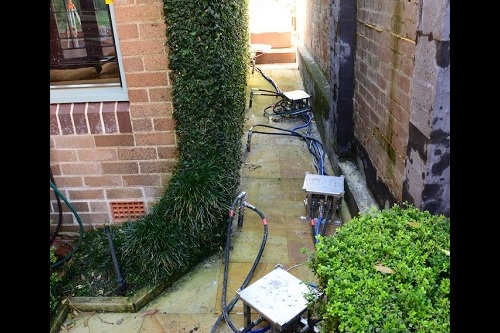As many property owners and insurance professionals will agree, subsidence of a property is devastating news for the owner. Levelling a sloping, uneven building is traditionally an intrusive and time-consuming process that can carry a hefty price tag for both claimants and insurance companies. However, with advances in technology, traditional underpinning methods are no longer the only option and instead insurers and loss adjusters can collaboratively adopt a technology led, injection solution that requires little to no excavation, creates minimal mess, is extremely accurate and often allows the occupants to reside in the property while the work is carried out.
What is injection technology?
Historically, ground engineering solutions haven’t been the most cost-effective option for both property owners and insurance companies. What’s more, due to the invasive nature of traditional methods, as well as the inconvenience caused by these processes, it’s often the last resort. However, advances in new technology means that expensive and inconvenient methods are now a thing of the past, with injection processes becoming a far more viable solution. It’s now possible for home owners, insurance companies and loss adjusters to use non-invasive methods to raise and strengthen a building. For example, Mainmark offers two non-invasive injection solutions including Teretek®, engineered resin injection and JOG Computer-Controlled Grouting, which delivers a high mobility cementitious grout mix to a multitude of injection ports under precise computer control. The JOG computers control the grout monitors, injecting every few seconds to gently and precisely raise, or “float”, the entire structure back to level.
This advancement in technology is a real game changer when it comes to policy claims, as it allows the loss adjuster to offer a far quicker and reliable solution that is financially beneficial for both parties. What’s more, these new advanced solutions remove the insurer’s responsibility to provide alternative accommodation for the claimant, as the homeowner can remain in their property whilst the work is carried out. Not only does this simplify the claim process but it also enables the insurance company the save money, as alternative accommodation can often end up costing more than the remedial ground work itself.
So, how does this work in practice?
Recently, Mainmark came to the assistance of a Macclesfield homeowner, whose two-story brick house had started to subside by as much as 82mm. The homeowner was hoping to renovate the property but needed to fix the structural issues beforehand. There were a number of options considered by the homeowner including traditional underpinning. However, not only would that have simply stabilised the property and not lifted and re-levelled, it would have taken a prolonged period of time. Due to the tight timeframe as well as the cost and disruption associated with those methods, the homeowner decided to appoint Mainmark and utilise their computer-controlled injection process. This solution allowed the homeowner to continue with his renovations in a timely manner and helped prevent future subsidence issues, as the material used in Mainmark’s JOG process strengthens the foundation ground whilst lifting and re-levelling.
The Mainmark team faced a number of obstacles during this job including the amount the house was sloping; the entire 64m2 structure needed to be lifted. Adding to the challenge, the Mainmark engineers had to carry out the work with limited site access due to the narrow, shared driveway, however, because JOG equipment is self-contained it reduces the ‘site footprint’ and allows for easy access. Furthermore, because of the renovations that were due to take place, Mainmark was tasked to complete the project within a five-day timeframe. Using Mainmark’s proprietary technology, the engineers were able to complete the job in less than five days, achieving a maximum differential of just 6mm across the entire area of the house.
This example clearly indicates the capabilities of modern technology and how it can completely transform the claims process both for insurance professionals and property owners.
If you would like to talk to Chris Charman at Mainmark, CLICK HERE, leave a message and youTalk-insurance will pass your enquiry on.

